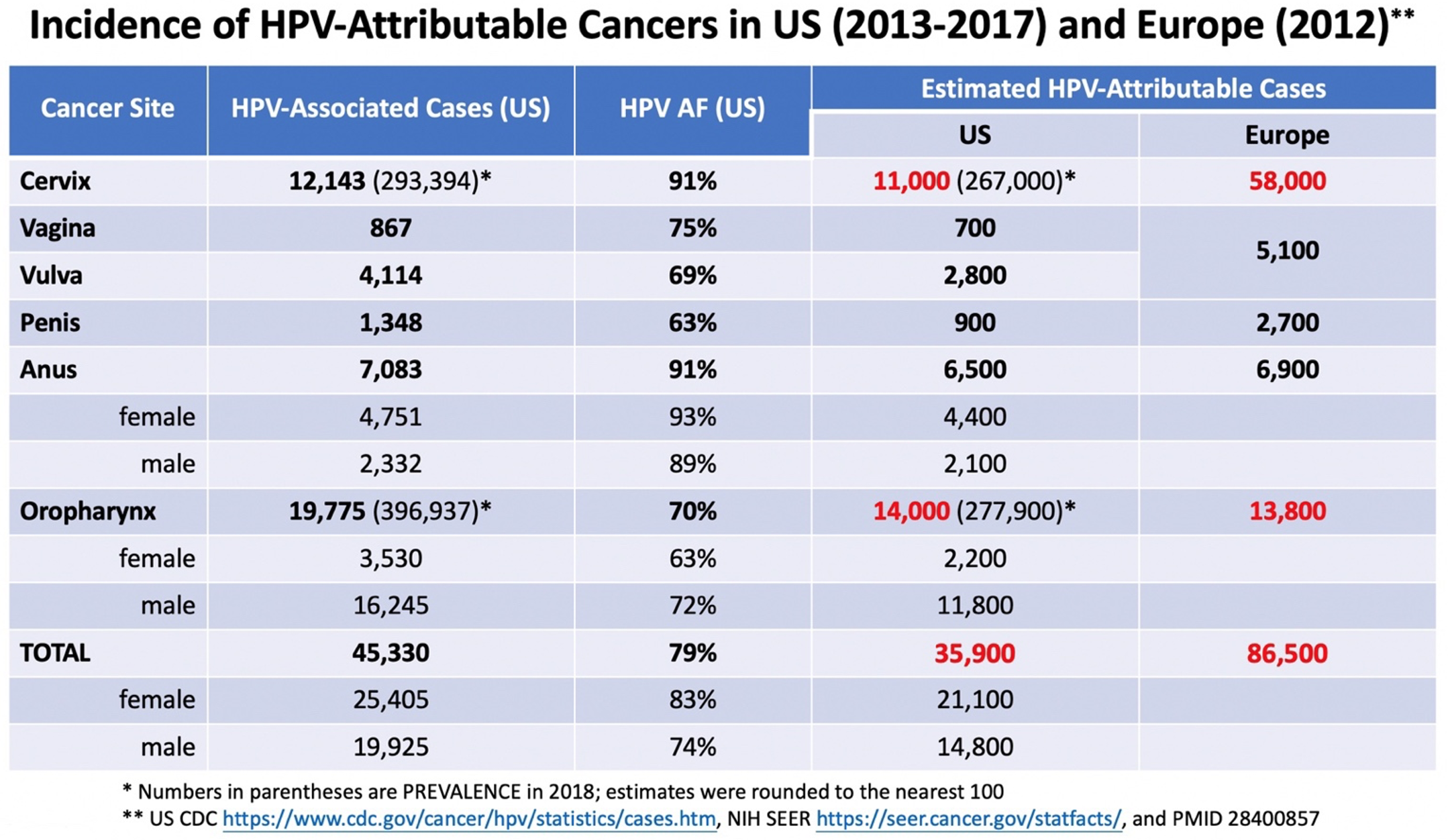Human papillomavirus (HPV) is the most common sexually transmitted infection. Certain high risk types of HPV are a necessary cause of nearly all (approximately 99%) cervical cancer cases in women and 4.5% of all cancers worldwide.
The “attributable fraction (AF)” for HPV is nearly 100% in cervical cancer (i.e., HPV is the only cause of this cancer), whereas HPV causes 15~88% of vulvar, vaginal, penile and anal cancers, and about 30% in oropharyngeal/head & neck cancer in some countries, and as high as 70% in others like the US ref.
Established treatments for HPV-associated cancers include surgery, radiotherapy and chemotherapy. For those unfortunate cancer patients ineligible for surgery (i.e., locally advanced disease, distant metastasis, and recurrence after initial treatment), adjuvant therapy, alone or in combination with chemoradiotherapy, is indicated. More recently the use of PD-1/PD-L1 immune checkpoint blockade treatment has been introduced, resulting in significant survival benefits in many such patients (especially those whose tumors express PD-L1) with durable responses observed in 10~20% of patients ref. PBI’s therapeutic vaccine PVX7 has the potential to greatly boost the efficacy of this adjuvant immunotherapy.

According to US CDC statistics, in 2013~2017 the average annual incidences of all newly diagnosed HPV-attributable cancers was 35,900. Of these, oropharyngeal cancer (14,000 cases) and cervical cancer (11,000 cases) were the most common, and female (21,100 cases) outnumbered male patients (14,800 cases). In 2018, the estimated prevalence of cervical cancer in the US was 293,394, based on the statistics reported by US NIH SEER (Surveillance, Epidemiology, and End Results) Program. These and similar numbers for other HPV-attributable cancers indicate that the US prevalence of each of these cancers are typically 10~20-fold of their annual incidences (see table above). In Europe, combined annual incidence of these HPV-attributable cancers published in 2012 was more than twice as many as that in US (see table above) ref. We believe that annual incidence and prevalence rates in other regions of the world are equally high, if not higher. Many of these cancer patients can potentially benefit from PVX7 therapeutic vaccine as an adjuvant immunotherapy.